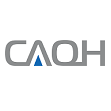Alleviating the administrative burden of credentialing for dental practices
Dental provider credentialing, a process most often associated with a dentist contracting with an insurance carrier, can be cumbersome for both dentists and dental plans.
One reason is related to slow adoption of automated solutions resulting in continued reliance on paper-based submissions of enrollment applications. Even when automated solutions are used, a dentist may need to access a separate platform to complete the enrollment application for each contracted plan.
Numerous contractual and regulatory requirements obligate dental plans to ensure that contracted dentists are legally qualified to practice. While plans are required to re-credential dentists every three years, practices may also encounter frequent plan inquiries for professional and practice information for claims administration or directory services. Similarly, should a dentist need to make an update due to a change of name, address or licensure, they must notify multiple plans.
For dentists and dental practices, the lack of a single automated platform for credentialing is not only inconvenient but has a direct impact on administrative costs. A recent CAQH survey of physicians found that practices that use multiple methods for credentialing spend 40 percent more on associated administrative costs than those that use a single platform. Given that both physicians and dentists contract with multiple plans, it is reasonable to suspect a similar cost savings opportunity would apply to dental practices.
For dental plans, the benefits of a single credentialing platform can help mitigate common provider data challenges, including dentist abrasion from redundant requests as well as inaccurate or incomplete provider data due to illegible or incomplete paper forms. Today, dental plans invest in manual provider outreach to fill provider data gaps, adding more requests and administrative pressure on dental practices. The manual process of chasing down provider data results in higher costs for health plans and increases the likelihood of human error.
The 2020 CAQH Index estimates that by automating administrative transactions, the potential savings opportunity for the dental industry is $3 billion.
The Index also confirms an encouraging trend in the dental industry. In the 2019 calendar year, the electronic transaction volume increased by 15 percent, representing 46 percent of all transaction volume — the first time that electronic volume has surpassed manual volume for the dental industry in the history of the Index.
The dental industry’s steady progress toward automation may signify the inevitability of a standardized, industry-wide solution for provider credentialing adopted universally by both dental plans and dentists. In the medical industry, CAQH ProView® has largely addressed that need by serving as a trusted source and industry standard for self-reported provider data.
With participation from most large dental plans and over 80,000 dentists, the ADA® credentialing service, powered by CAQH ProView®, is also becoming the trusted source for timely, compliant and comprehensive information for dentist credentialing.
This solution improves upon the traditional credentialing process by centralizing and standardizing a single application, which is accepted in all 50 states and enables dentists to share their professional and practice information with all participating dental plans. This service is free of charge to any U.S. licensed dentist, regardless of their membership status with the ADA.
With the growing participation of dentists and the nation’s leading dental plans, there has never been a better time for dental plans to seize the opportunity to improve the credentialing process for themselves and their provider networks.
To learn more about ProView for dental plans, visit our product page.
